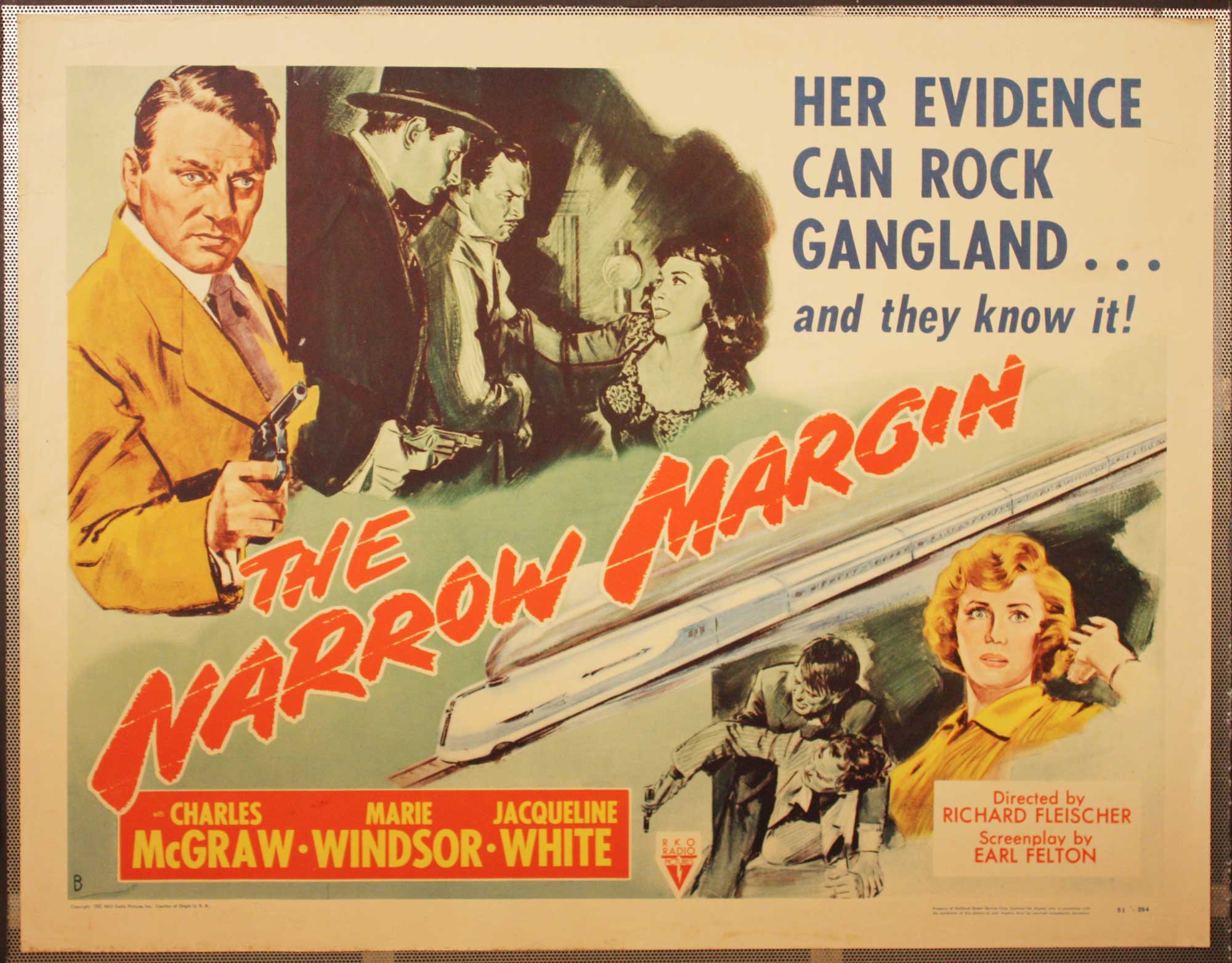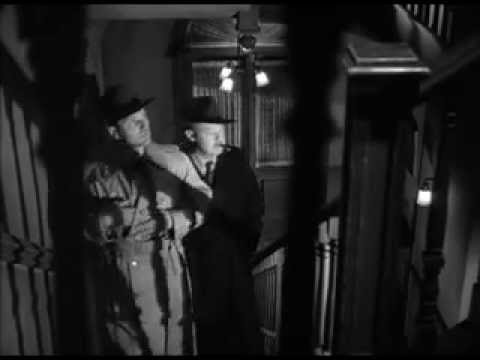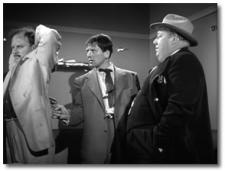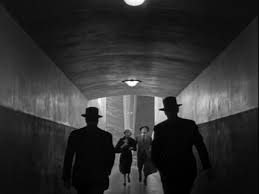 The Narrow Margin
The Narrow Margin
Dir: Richard Fleischer
Stars: Charles McGraw, Marie Windsor, Jacqueline White, David Clarke, Don Beddoe and Paul Maxey
With the summer movie season already upon us thanks to the record breaking Avengers: Infinity War‘s release in late April, I was chatting recently with folks back home about the theater experience. It’s funny how much we take for granted by going to the cinema here in Los Angeles. Of course we’ll get there super early. Obviously we’re going to select our seat before entering the theater. Most of the time, we expect stadium seating with a chair easily mistaken for a recliner. But, back in my hometown of Cincinnati, like many “flyover states,” the theater experience is much different. Theaters aren’t as nice, the experience is generally perceived as either a real treat – or a totally indulgent, impulsive purchase.
Now, I appreciate “event films” like the aforementioned Avengers, the Star Wars films, and Fan favorites that dot the calendar year. Oftentimes, it seems the “theater experience” is touted in everything from the advertising for a movie – we’ve all heard copy like, “experience it in IMAX,” – to the resulting conversation as we walk to our cars. For example, I was seriously relieved to have seen Dunkirk in theaters last year, as that’s a superb film “experience,” which would have had its overall effectiveness diluted to a certain extent by watching it at home or, heaven forbid, on an even smaller screen.
 But, as I stayed up on a late Saturday night after everyone went to bed watching The Narrow Margin, presented by Noir aficionado Eddie Muller on TCM, I realized the at-home “in the mood” movie viewing is an experience all its own, too. I didn’t want to start an episode of a TV show I’m watching. I wasn’t in the mood for more sports highlights. I wasn’t ready for bed, either. It was too late to go meet some pals at the local watering hole. So, as I’m scrolling through the cable menu options, I come upon TCM and see that this suspense film called The Narrow Margin is starting in five minutes. Well, hot damn – let’s use the facilities, grab another great Cincinnati beer and put up our feet!
But, as I stayed up on a late Saturday night after everyone went to bed watching The Narrow Margin, presented by Noir aficionado Eddie Muller on TCM, I realized the at-home “in the mood” movie viewing is an experience all its own, too. I didn’t want to start an episode of a TV show I’m watching. I wasn’t in the mood for more sports highlights. I wasn’t ready for bed, either. It was too late to go meet some pals at the local watering hole. So, as I’m scrolling through the cable menu options, I come upon TCM and see that this suspense film called The Narrow Margin is starting in five minutes. Well, hot damn – let’s use the facilities, grab another great Cincinnati beer and put up our feet!
To start, Mr. Muller does a great job of offering some context for these films before starting. I lament the fact that we seem to have abandoned a technique often used in 80s films, one I call “the scroll.” This is that rolling bit of detail that would display on screen before a film got underway. Recently, I saw it again in the Schwarzenegger action/sci-fi film,The Running Man. The “scroll” in that film informed us that in a dystopian future, the governments had essentially collapsed into one due to famine and shortages of natural resources – and the only thing really keeping the public in line was the weekly airing of a game show called The Running Man where criminals got an opportunity to pay their debt to society in one night, or die trying. In the same way, Muller introduces Margin with an enthusiastic prelude. We get insight into the actors, particularly Marie Windsor and what the film did for her career. His commentary gives us, the viewers, a heads up that now would be a good time to change your mindset – and enter another world.
 And in this case, that world is one of “Noir”, a delicious film sub-genre that straddles the lines between action, drama, melodrama, suspense, thrillers and sometimes horror and even comedy. These movies celebrate and explore that gray line between the evil that Man is capable of, with his desire for truth, justice and love. For its Fans and viewers, noir’s definition is much like its storylines, characters and classic black-and-white look. The Narrow Margin captures all of these elements in exemplary fashion, starting with the story.
And in this case, that world is one of “Noir”, a delicious film sub-genre that straddles the lines between action, drama, melodrama, suspense, thrillers and sometimes horror and even comedy. These movies celebrate and explore that gray line between the evil that Man is capable of, with his desire for truth, justice and love. For its Fans and viewers, noir’s definition is much like its storylines, characters and classic black-and-white look. The Narrow Margin captures all of these elements in exemplary fashion, starting with the story.
Imagine two surly looking gents disembarking an old train in early 1950s Chicago. The opening scene follows these two guys, who look like criminals but are soon revealed to be LAPD detectives who are in town to pick up an important mob witness and escort her back on the train to Los Angeles. The witness is played by the aforementioned Windsor, with a real snarkiness and attitude that you can’t help but grin at. It’s like her character’s eyebrow is stuck halfway up her forehead and she can’t go more than ten minutes without throwing a dismissive shrug.
In the course of taking the witness downstairs, the elder detective is murdered and the protege, Det. Sgt. Walter Brown, is crestfallen. He forces himself to do the job as the movie unfolds, but as played by Charles McGraw, we believe as the character wrestles with the failure of his partner’s death. Now, the train is littered with tough talking, spurious looking gangsters, of course. As Brown comes across these hoodlums, it’s fun to watch the interactions and how they build and top.
Margin is kind of like “Die Hard” on a train as presented within the rules of noir, which include the good guy, the shady gal, the numerous hoodlums, the innocent gal and her son – and some surprising twists among other supporting roles like the conductor and a passenger named Sam Jennings. Portrayed by the very portly Paul Maxey, he has one of the best lines in the film as Brown tries to pass him in the narrow train walkway – “There’s only two people in the world who like a fat man, his grocer and his tailor.” But the greater point is that part of this experience of watching an old film because you’re in the mood – you never know how they’re going to remind you of more modern films, and how today’s filmmakers are always “borrowing” from their predecessors. And by the way, that’s a good thing, whether they credit the previous generation for their influencer or not.
 There are fistfights and twists leading towards the climax, but for me, it’s also the little things you get to observe in watching these old films. Compared to a painting in a museum, these old films (pre late 1960s) are moving lessons in how life used to be. Consider one scene in which everyone’s gone to sleep on the train, and the next shot is an exterior of the train tearing towards its Los Angeles destination. We cut back inside to one of the compartments that has just a curtain on either side of the narrow walkway. And one of the hoodlums pulls away the curtain to take his little sundries kit to the sink at the back of the car. He washes up in this community sink on the train because he got the cheap ticket – and the guy behind him does a real job of demonstrating (with pre-method acting, surely) how frustrated he is with how long the hoodlum took.
There are fistfights and twists leading towards the climax, but for me, it’s also the little things you get to observe in watching these old films. Compared to a painting in a museum, these old films (pre late 1960s) are moving lessons in how life used to be. Consider one scene in which everyone’s gone to sleep on the train, and the next shot is an exterior of the train tearing towards its Los Angeles destination. We cut back inside to one of the compartments that has just a curtain on either side of the narrow walkway. And one of the hoodlums pulls away the curtain to take his little sundries kit to the sink at the back of the car. He washes up in this community sink on the train because he got the cheap ticket – and the guy behind him does a real job of demonstrating (with pre-method acting, surely) how frustrated he is with how long the hoodlum took.
Now, I have never taken a train across the U.S., and I certainly can’t take one from back in the 1950s. I was fascinated by the small spaces the hero is forced to work within – and how the communication to and from the train worked with bags snatched off of poles as the train sped by. These little details are exactly the kind of things I was in the mood for when I saw the film listed in the cable guide.
Which brings me to my greater point about the smaller, “in the mood” home movie experience. Whether or not you’ve had a day of resolution or frustration, a movie can oftentimes be the perfect salve before hitting the sack. I knew that in 90 minutes, I would have seen a film from a genre I really like – and that the story would be resolved. Unlike another episode of TV or infinite sports highlights, movies still have that unique power to entertain us for a finite period of time – and offer a complete resolution, too. And, do all of this entertaining in the comfort of our own home, with our dog or cat in one hand and our beverage of choice in the other.
